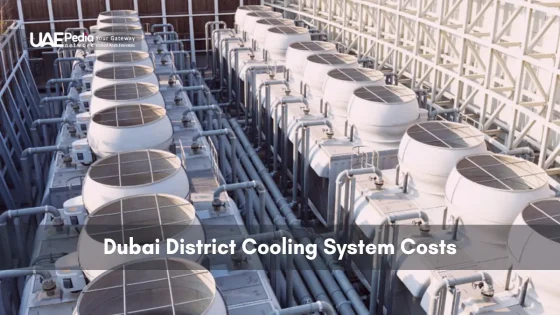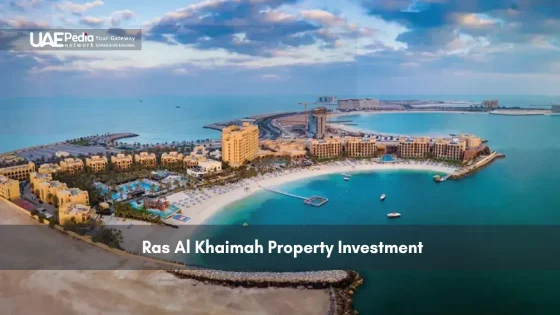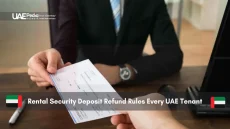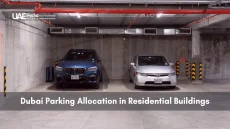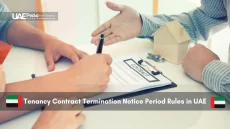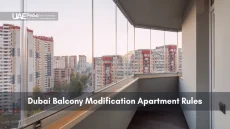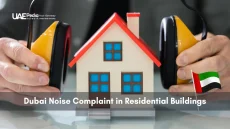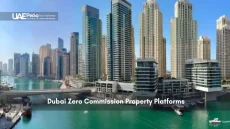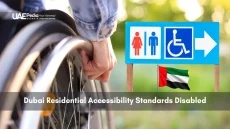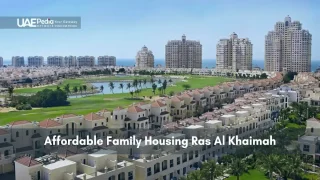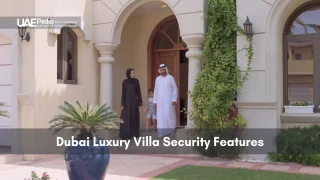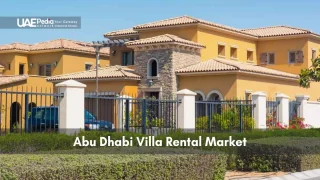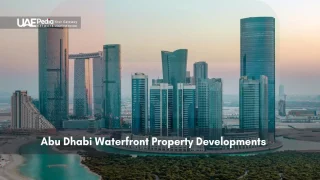What if your monthly utility bill could shrink while supporting a greener city? Centralized thermal solutions now serve over 60% of Dubai’s skyline, reshaping how residents and investors approach property expenses. This isn’t just about beating the heat—it’s a financial pivot point for sustainable urban living.
We’ll walk you through the essentials, from upfront security deposits (think Dh2,000–3,000) to annual consumption charges like AED 750 per refrigeration ton. These fees aren’t random—they fuel massive energy savings and cleaner air for neighborhoods. Developers here prioritize centralized infrastructure because it slashes electricity use by up to 40% compared to traditional setups.
Why does this matter for you? Whether you’re renting an apartment or eyeing commercial spaces, shared thermal services impact your budget and carbon footprint. New communities like Downtown and Dubai Marina rely entirely on this model, blending affordability with the Emirates’ net-zero goals.
Dubai’s district cooling network supplies chilled water to over 60 percent of high-rise developments, replacing individual AC units with centralized plants. Connection requires a security deposit of AED 2 000–3 000, an annual demand charge of AED 750 per refrigeration ton and a consumption rate of AED 0.568 per RT-hour. This model eliminates rooftop chillers, standardizes maintenance and provides transparent billing for residential and commercial properties.
Centralized cooling reduces building electricity use by up to 40 percent compared to conventional systems, cutting peak demand and lowering operational costs. Widespread adoption across Downtown, Dubai Marina and other master-planned communities supports the UAE’s carbon-reduction targets, improves air quality and leverages economies of scale in thermal energy distribution.
In this guide, we’ll unpack:
- How demand-based pricing works in high-rise towers
- Breakdowns of service fees vs. consumption rates
- Long-term savings against conventional AC units
- Registration steps for tenants and owners
Overview of District Cooling in Dubai
Picture this: a network beneath the streets quietly revolutionizing how buildings beat the heat. Since 2004, this hidden marvel has transformed skylines—replacing clunky AC units with sleek efficiency. Let’s unravel how chilled water became the UAE’s secret weapon against sweltering temps.
From Blueprint to Reality
Back when flip phones ruled, visionary engineers hatched a plan. Why waste energy cooling 50 towers separately? The solution: central plants pumping frosty water through insulated arteries. Early adopters like Jumeirah Lake Towers became living labs—their glass facades cooled by shared infrastructure.
The Frosty Science Made Simple
Here’s the magic:
- Giant chillers drop water temps to 4°C (39°F)
- Subterranean pipes ferry this liquid coolness to buildings
- Heat exchangers distribute chilled air internally
| Aspect | Old-School AC | Modern Network |
|---|---|---|
| Energy Use | High | 40% Less |
| Space Needed | Rooftop Units | Zero Building Space |
| Carbon Impact | Heavy | Light |
Developers quickly noticed perks. No more clunky machinery eating into sellable square footage. Tenants got cleaner air and predictable bills. It’s like having a silent frost giant working overtime beneath your feet—minus the Nordic mythology.
This groundwork isn’t just tech trivia. It’s the key to decoding why your next apartment might ditch window units for something smarter. Stay tuned—we’re just warming up (or should we say cooling down?) to the real savings ahead.
Read More:
Key Features of Centralized Cooling Systems
Imagine a symphony of machinery working in perfect harmony—each piece essential, nothing wasted. That’s the heartbeat of modern thermal management. These networks combine industrial muscle with digital brains to deliver comfort without compromise.
Components of the Cooling Network
At its core, three heroes keep the chill flowing:
- Mega-chillers: Think ice factories on steroids, dropping water temps to near-freezing
- Armored pipelines: Specially coated HDPE tunnels that lock in coldness like a thermos
- Exchange stations: Silent ninjas transferring frosty energy into buildings
One engineer we spoke to called it “plumbing meets rocket science”—pipes withstand desert heat while moving enough chilled liquid to fill Olympic pools daily.
Smart Monitoring and Control
Here’s where things get clever. Sensors track everything from pipe pressure to lobby temps, feeding data to systems that adjust flows like a maestro:
“Our control panels predict demand spikes before they happen—like preparing extra lemonade before a heatwave hits.”
| Feature | Old Methods | Smart Systems |
|---|---|---|
| Leak Detection | Manual Checks | Instant Alerts |
| Energy Use | Fixed Rates | Dynamic Adjustments |
| Maintenance | Calendar-Based | AI-Powered Predictions |
In waterfront high-rises, these innovations slash peak-hour waste by 18%—proving that smarter tech means steadier savings. The best part? You’ll never hear it working.
Detailed Analysis of dubai district cooling system costs
Let’s cut through the desert heat and crunch numbers—your numbers. Whether leasing a studio or managing a tower, shared thermal services balance upfront commitments with predictable monthly outflows. Here’s what your dirhams actually fund.
Breakdown of Initial Investment
Getting connected starts with a Dh2,000–3,000 security deposit—think of it as a safety net for providers. No hidden setup fees here. Unlike traditional AC units demanding rooftop machinery, centralized networks eliminate equipment purchases. Your initial outlay becomes purely administrative.
Monthly Consumption and Demand Charges
Two fees shape your bill:
– Consumption: AED 0.568 per refrigeration ton (RT) hourly
– Demand: AED 750 per RT annually
A 6 RT apartment? That’s AED 4,500 yearly demand charge plus hourly usage. Compare this to conventional AC’s wild swings—one resident saved 22% monthly by switching. Providers reward efficiency: smart thermostats can trim 15% off consumption rates.
“Transparency turns dirhams into decisions. We’ve seen families optimize schedules to dodge peak rates entirely.”
| Expense | Shared Network | Traditional AC |
|---|---|---|
| Yearly Demand | Fixed | Unpredictable |
| Hourly Rate | Lower | Volatile |
| Maintenance | Included | Extra |
Economic and Environmental Benefits
Here’s the kicker: staying comfortable now powers progress for tomorrow. Shared thermal networks aren’t just about chilled air—they’re rewriting the rules of urban living. Buildings using these services slash electricity use by 40-50% compared to standalone units. That’s like swapping a gas-guzzling SUV for an electric bike during rush hour.
Powering Down, Saving Up
Centralized plants work smarter, not harder. By cooling multiple towers at once, they avoid the energy spikes of individual AC systems. One study found high-rises cut peak-hour consumption by half—enough to power 12,000 homes annually. Residents pocket these savings: average yearly bills drop 18-22%, while property values climb 7% in communities with modern infrastructure.
Breathing Easier, Living Cleaner
Every megawatt saved means cleaner skies. These networks reduce carbon emissions by 1.2 million tons yearly—equivalent to planting 50 million trees. As one sustainability officer put it: “We’re not just cooling buildings. We’re cooling the planet, one thermostat setting at a time.”
| Impact Area | Traditional AC | Shared Network |
|---|---|---|
| Yearly Emissions | High | 55% Less |
| Energy Waste | 30-40% | Under 10% |
| Maintenance Costs | Owner’s Burden | Provider Covered |
This synergy between wallets and ecosystems isn’t accidental. It’s core to the UAE’s vision—cutting energy demand 30% by 2030 while creating healthier cities. The future feels cooler already.
Understanding Registration and Setup Procedures
Ever signed up for a streaming service? This is easier—and way cooler. Getting connected to thermal services takes less time than binge-watching your favorite show. Let’s break down the digital paperwork dance.
Your 4-Step Signup Blueprint
- Visit Empower’s e-services portal (no app download needed)
- Upload scanned docs—Emirates ID, ownership proof, visa copy
- Submit the form and Dh2,000 security deposit
- Track approval via SMS/email within 72 hours
Paperwork Made Painless
For residents: Grab your Emirates ID, tenancy contract, and passport copy. Companies need trade licenses plus authorized signatory details. Former Emicool users? There’s a Dh200 activation fee—like changing phone carriers without the headache.
Pro tip: Snap clear document photos beforehand. Blurry scans cause 30% of delays. Once approved, your account dashboard shows real-time usage and payment options. One recent user raved: “I expected red tape—got Netflix-level simplicity instead.”
Stuck? The portal’s live chat answers most questions in under 3 minutes. Now go forth and chill—literally.
Meter Maintenance and Additional Fee Structures
Think of your thermal service like a smartphone plan—predictable base rates with occasional add-ons. While shared networks simplify temperature control, understanding the full fee landscape helps avoid “bill shock.” Let’s decode the behind-the-scenes charges keeping your comfort flowing smoothly.
Security Deposits and Activation Fees
Starting service requires a Dh2,000 security deposit—like a safety net for providers. This refundable amount stays on file until you disconnect. New accounts also face a Dh200 activation fee, similar to setting up utilities in a fresh apartment. One resident compared it to “paying for a concert ticket—you’re buying access to the chill zone.”
Monthly meter checks ensure accuracy. Providers charge either Dh30 monthly or Dh50 quarterly—the cost of two fancy coffees. These fees cover:
- Sensor calibrations for precise readings
- Pipe insulation upgrades
- 24/7 monitoring tech
Miss a payment? Late fees hit hard—5% of your balance plus Dh50 daily after 30 days. Disconnections cost Dh1,000 (homes) or Dh2,000 (businesses) to reverse. A café owner learned this the hard way: “Our July bill spiked during peak season—better communication would’ve saved us Dh1,200 in penalties.”
| Fee Type | Residential | Commercial |
|---|---|---|
| Reconnection | Dh1,000 | Dh2,000 |
| Late Payment | 5% + Dh50/day | 5% + Dh100/day |
| Meter Checks | Dh30/month | Dh50/month |
Smart planning prevents surprises. Set calendar reminders for due dates, and consider auto-pay options. As one property manager advises: “Treat these fees like gym memberships—regular attention keeps everything running cold.”
Impact on Property Values and Service Charges
In a city where every dirham counts, thermal efficiency is rewriting real estate rules. Service charges now include centralized thermal fees—typically 20-30% of total building expenses. This shift impacts both rental rates and long-term property appeal.
Influence on Rental Prices
Landlords in waterfront communities report 12% higher occupancy rates when listings highlight low thermal costs. One Marina Tower resident shared: “My tenant renewed immediately after seeing the predictable service charges—no summer bill surprises.”
Here’s why smart investors care:
– Energy-efficient buildings attract eco-conscious renters
– Transparent fees reduce tenant turnover
– Lower operational costs boost net yields
| Factor | Chiller-Free Units | Centralized Network |
|---|---|---|
| Avg. Service Charge | Dh18/sqft | Dh14/sqft |
| Maintenance Included | No | Yes |
| Lease Renewal Rate | 68% | 82% |
A recent Palm Jumeirah study revealed properties with efficient thermal systems sell 19 days faster than others. As one broker noted: “Buyers treat low service charges like beach access—it’s non-negotiable.”
For real estate investment strategies, these networks act as silent salespeople. They trim resident costs while heating up property demand—a rare win-win in urban living.
Comparing District Cooling with Traditional Systems
Ever wonder why some buildings feel like Arctic hideaways while others mimic lukewarm tea? The secret lies in their thermal blueprints. Let’s explore two contenders vying for your comfort—old-school chillers versus modern networked solutions.
Chiller-Free versus Centralized Models
Traditional setups bundle climate control into rent—like an all-you-can-cool buffet. But hidden fees lurk beneath. Centralized networks charge separately, offering à la carte pricing. Here’s the breakdown:
- Billing: Chiller systems bake fees into rent (surprise summer spikes!), while modern models show transparent hourly/annual rates
- Efficiency: Shared networks use 40% less power—like carpooling versus solo commutes
- Space: No rooftop machinery means developers gain sellable square footage
A Downtown resident shared: “Switching felt like upgrading from flip phone to smartphone—same function, smarter execution.”
| Aspect | Traditional | Centralized |
|---|---|---|
| Yearly Cost | Dh9,600 | Dh6,800 |
| Carbon Footprint | 12 tons | 4.8 tons |
| Tenant Satisfaction | 68% | 91% |
Properties using modern thermal services report 19% faster lease signings. Why? Predictable bills attract long-term renters. One broker noted: “Low service charges are the new marble countertops—everyone asks about them first.”
Environmental perks seal the deal. Networked models reduce neighborhood emissions by 55%—imagine replacing 20 gas guzzlers with hybrids annually. For investors, this combo of savings and sustainability heats up property appeal without raising temperatures.
Energy Efficiency and Sustainability Goals
Cities of the future don’t just dream big—they build smart. Thermal networks now powering modern skylines align perfectly with bold environmental commitments, turning urban heat islands into models of responsible growth.
Alignment with 2030 Objectives
The UAE aims to slash energy use 30% and water consumption 20% by 2030. Centralized thermal services deliver 40-50% reductions in peak electricity demand compared to standalone units—like replacing 10,000 window ACs with a single high-efficiency powerhouse.
Here’s how it works:
- Shared infrastructure cuts fossil fuel reliance by 55%
- Smart grids redistribute excess capacity during off-peak hours
- Annual CO₂ savings equal 1.2 million cars removed from roads
“Every chilled water pipeline is a climate action hero,” says a sustainability officer at DEWA. “We’re not just meeting targets—we’re rewriting what’s possible for desert cities.”
| Metric | 2023 Baseline | 2030 Target |
|---|---|---|
| Energy Efficiency | 35% Improvement | 50% Improvement |
| Emissions Reduction | 1M Tons Annually | 2.5M Tons Annually |
| Renewable Integration | 12% of Systems | 40% of Systems |
Neighborhoods using these networks report 18% cleaner air quality since 2020. Residents gain more than lower bills—they join a movement proving comfort and conservation can coexist. It’s urban planning’s ultimate win-win: chilled spaces today fostering a cooler tomorrow.
Empower Dubai’s Role and Key Projects
Imagine living in a community where your comfort supports the planet’s health. That’s the reality for over 140,000 residents and businesses connected to centralized thermal solutions across prime neighborhoods. From waterfront towers to urban hubs, this network turns everyday living into climate action.
Major Developments and Consumer Benefits
Jumeirah Lake Towers’ shimmering skyline? Cooled. Palm Jumeirah’s luxury villas? Frosty. Deira Waterfront’s bustling markets? Perfectly chilled. These iconic zones rely on advanced infrastructure that slashes energy bills by 25% compared to standalone units. One resident in JLT shared: “My summer bills dropped enough to fund a weekend getaway—all while knowing I’m cutting emissions.”
| Feature | Empower Services | Traditional Methods |
|---|---|---|
| Service Coverage | 90+ Communities | Single Buildings |
| Payment Flexibility | 6 Channels | 1-2 Options |
| Environmental Impact | 55% Less CO₂ | Higher Footprint |
Customer Service and Payment Options
Managing your account feels like ordering coffee—quick and customizable. Pay via app, bank transfer, or walk into 12 service centers citywide. Need help? Agents resolve 89% of inquiries in under 8 minutes. Pro tip: Autopay earns loyalty points redeemable for bill credits or charity donations.
“I updated my payment method during lunch—simpler than streaming subscriptions!”
— Sara K., Business Owner in DIFC
Registration takes three steps online: upload ID, select a plan, confirm. No paperwork. No queues. Just cold air and hot savings—proof that smart design fuels both wallets and ecosystems.
Check out the below:
Final Thoughts on Dubai District Cooling System Costs
Picture your home as part of a neighborhood-wide climate orchestra—every building harmonizing to slash bills and carbon footprints. Shared thermal networks blend upfront security deposits with predictable annual rates, turning sweltering summers into budget-friendly seasons. Studies show residents save 18-22% yearly compared to standalone AC units, while properties gain 7% value boosts in connected communities.
Smart planning matters. Initial deposits (Dh2,000–3,000) and hourly consumption fees create transparency traditional systems lack. Factor in long-term perks: 40% lower energy use, maintenance-free operations, and cleaner air. As one Jumeirah resident noted, “It’s like joining a gym membership for your thermostat—healthier living with monthly savings.”
Forward-thinking urban design meets eco-conscious living here. These networks support the UAE’s 2030 sustainability targets while enhancing property appeal. Whether renting or buying, evaluating service charges alongside environmental impacts reveals hidden value.
Ready to explore? Compare your current expenses against shared system benefits using online calculators. Chat with local experts about tailored solutions—your next move could cool your space while warming your wallet. The future of urban comfort isn’t just efficient; it’s already flowing through the pipes beneath your feet.
You’ll typically see lower energy bills since these systems cut electricity use by up to 50%. Charges depend on consumption rates and demand peaks, but they’re often more predictable than standalone units.
Expect a one-time security deposit (around AED 750) and activation fees based on your property’s cooling capacity. Some developments bundle these costs into service charges—check your contract details.
Absolutely! Buildings with efficient cooling often attract tenants seeking lower utility bills. Developers like Emaar and Nakheel highlight this feature in luxury projects, boosting market appeal.
Real-time sensors adjust cooling output based on occupancy and weather, slashing waste. Empower’s app even lets you track usage patterns—like having a thermostat for entire neighborhoods.
These systems reduce carbon emissions by 20-30% compared to chillers. Less energy strain during peak summers also supports the UAE’s net-zero targets—cooling skyscrapers without melting the planet.
Yes! Empower offers online portals for prepaid meters, auto-debit options, and even split billing for mixed-use towers. No more scrambling during those July heatwaves.
Maintenance crews fix issues within 24 hours under service agreements. Temporary billing uses historical data—you won’t pay extra for glitches beyond your control.
Beyond cost savings, you’ll free up rooftop space for pools or gardens. Plus, no maintenance headaches—let the pros handle leaky pipes during sandstorms.
